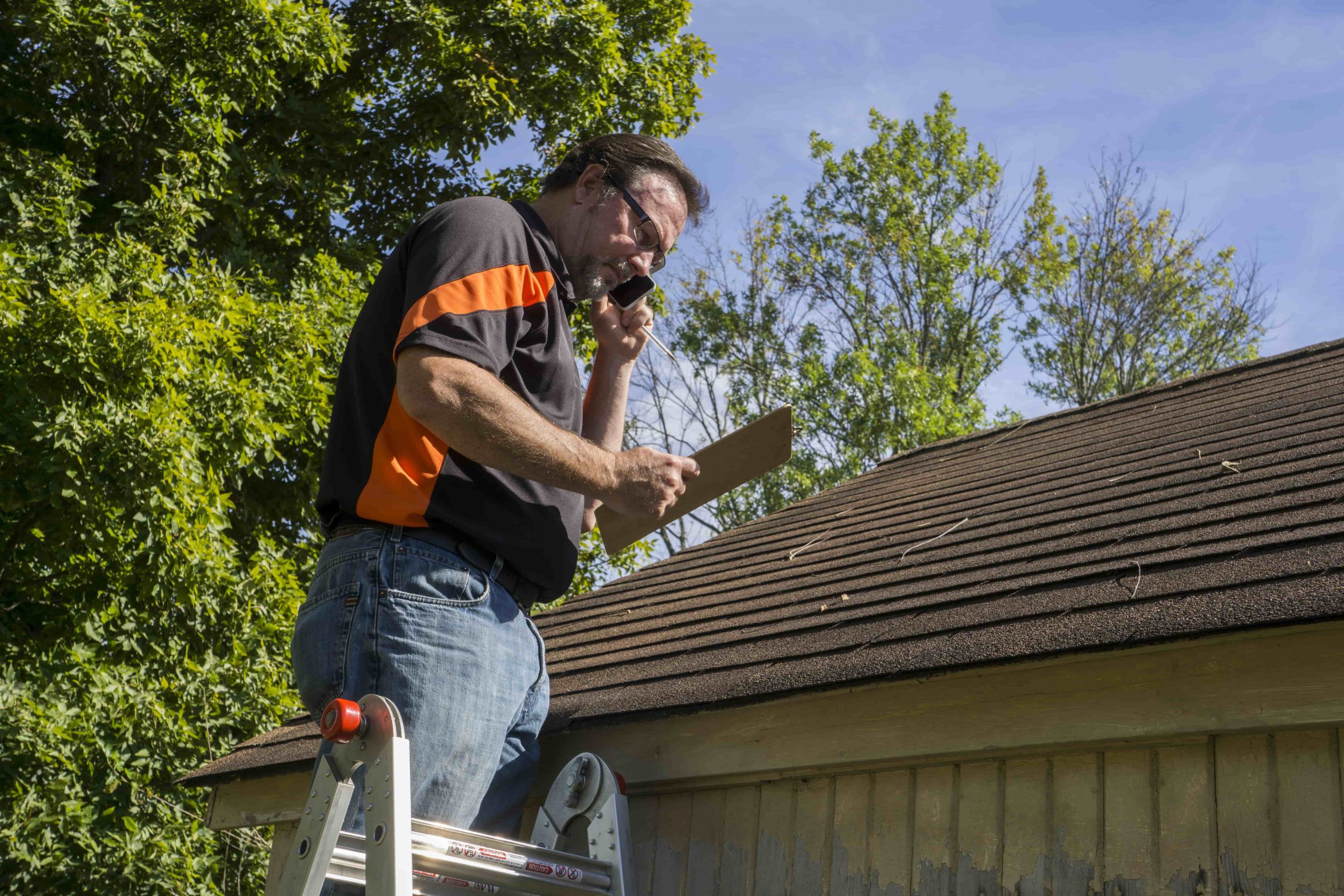As you navigate the unpredictable world of weather-induced roofing damage, it’s crucial to be well-equipped with not only the right tools but also the knowledge to assess and document these damages effectively. After all, your customers’ claims depend on your expertise and diligence.
That’s where our cutting-edge YVA Virtual Claims app (available now on iPhone and Android) comes in, providing you with exceptional training and education during our seamless onboarding process. In this post, we’ll be exploring the two most common types of residential damage claims that your customers may encounter and offer tips on how to accurately identify them. Stay tuned as we uncover the secrets to mastering the art of scoping damages and getting the most out of your clients’ claims.
What does hail damage look like?
Hailstorms unleash a torrent of ice balls or irregular lumps that can vary greatly in size and shape. Surprisingly, these icy assailants don’t require freezing temperatures to fall and can cause significant damage even in seemingly minor storms. Roofs often bear the brunt of hail’s fury, and if left unchecked, hail damage can lead to additional issues like water intrusion or mold growth.
So, what does hail damage look like? It can range from glaringly obvious to deceptively subtle. Large hailstones (1″ in diameter or larger) often leave dents in shingles or cracks in tiles, while smaller ones can inflict less visible harm. Be on the lookout for dings, dents, or holes in roof vents, gutters, roof flashing, garage doors, mailboxes, or even car hoods.
Although some damage may seem easy to spot, it’s crucial to conduct a thorough inspection, lifting shingles and examining more concealed areas. Document every detail with high-quality photographs, and make a note of the hailstorm’s date to ensure comprehensive insurance claim documentation.
Once you’ve gathered all the necessary information, our YVA Virtual Claims app streamlines the entire process. Submit your findings, and watch our team of claims specialists work their magic, handling everything from filing and estimating to negotiating and settling your customer’s claim.
What does wind damage look like?
Windstorms can be a homeowner’s worst nightmare, especially when gusts reach speeds of 50-60 miles per hour or more. In these situations, the destructive force of wind can be akin to that of a hurricane or tornado, leaving homes and properties vulnerable to severe damage. Mobile home residents, in particular, face heightened risks, while even well-anchored homes can sustain significant harm from 80+ mph winds. If left unaddressed, wind damage can spiral into further complications, including the dreaded mold growth.
So, what does wind damage actually look like? Keep an eye out for these telltale signs:
– Fallen branches, uprooted trees, and toppled power lines
– Loose or missing shingles, chimney issues, curling or peeling shingles, and indoor leaks
When it comes to insurance claims, documentation is critical. While Public Adjusters can help prove that property damage resulted from a fallen tree, having ample photographic evidence can make a world of difference. Remember, though, that most home insurance policies won’t cover damages caused by poor maintenance, such as neglecting to remove dead or rotting trees.
That’s where Your Virtual Adjuster comes in, equipping you and your sales team with the knowledge and education needed to capture the right documentation for your customer’s insurance company. With just a simple swipe of your finger, you can send everything to our office to kickstart the claims process.
How can I help my customers with hail and wind damage?
Dealing with wind and hail damage can be a daunting task for homeowners and contractors alike. Understanding the different types of damages and being well-informed about the signs of wind and hail damage is essential for effectively addressing these issues. Thorough documentation, including detailed photographs and accurate records of the events, plays a vital role in ensuring a smooth and successful insurance claim process.
The YVA app serves as a powerful tool, guiding you through the process of collecting and submitting the necessary documentation. With this app, you can rely on our expert claims specialists to handle your customer’s property damage claims professionally and efficiently, from filing and estimating to negotiating and settling. We keep both you and the homeowner informed and involved every step of the way, fostering transparency and trust.
By staying vigilant, being meticulous with documentation, and leveraging the power of the YVA app, you will be well-equipped to face the challenges of wind and hail damage head-on. This not only helps restore your customers’ properties but also provides them with the peace of mind they deserve. Together, we can navigate the complexities of weather-induced damages and ensure the best possible outcomes for homeowners and contractors alike.
Let Your Virtual Adjuster help you and your customers
As we embrace the future of claims, we invite you to join us on this journey with Your Virtual Adjuster, powered by Bulldog Adjusters. No matter the property damage claims your customers face, rest assured that our innovative platform has their back.
With Your Virtual Adjuster, you can concentrate on what you do best – selling roofs – while our dedicated team of claims specialists expertly handles every aspect of the claims process. From filing and estimating to negotiating and settling, we keep you and the homeowners informed and involved at each stage, ensuring a seamless experience for all.
Discover the future of claims with Your Virtual Adjuster and witness the transformative impact it can have on your business.

